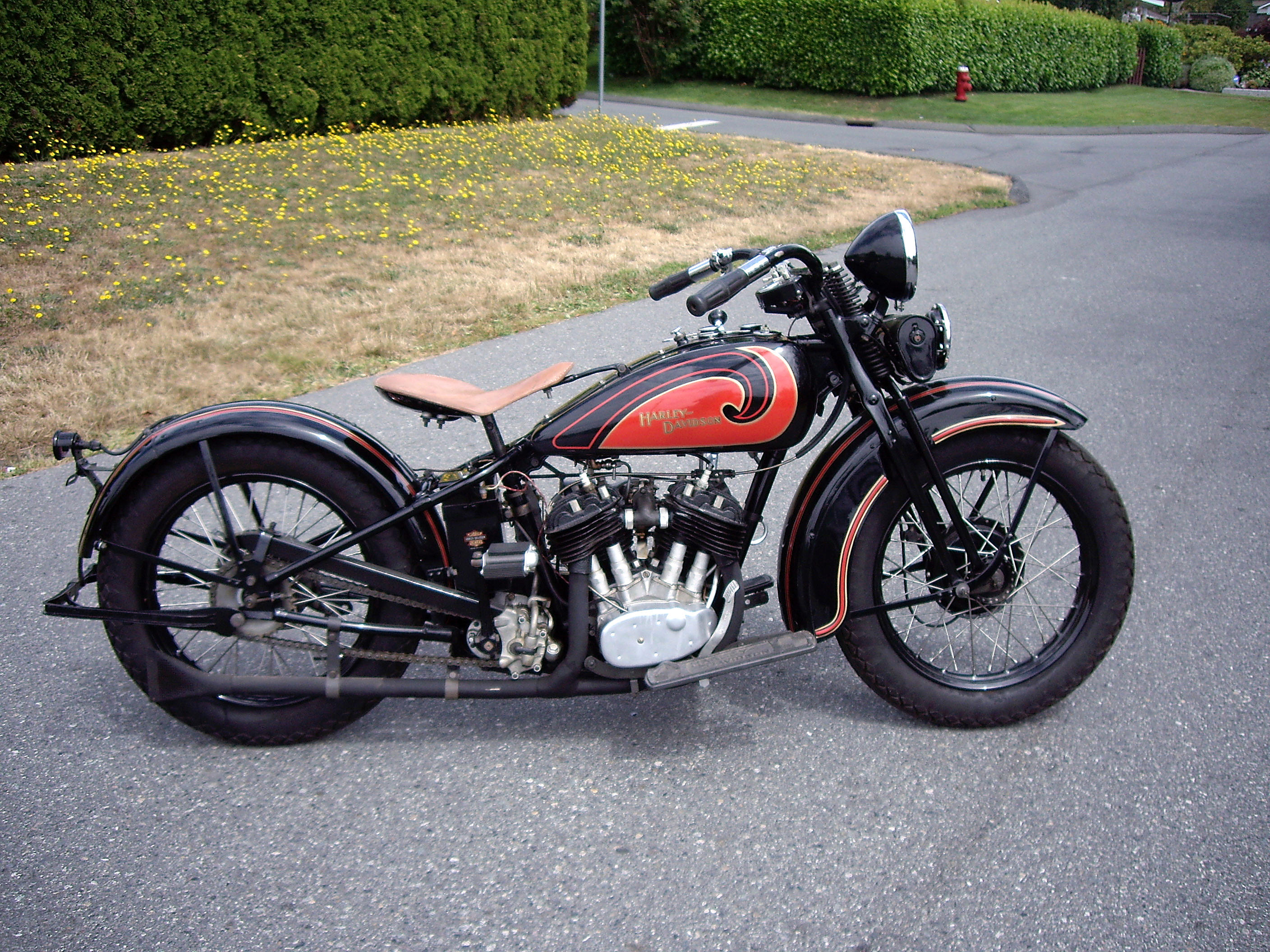Engine No. DGP 8933 • Landmark Indian model • Originally an Export model Respected as one of the finest motorcycles to ever be manufactured at the famous Wigwam, home of the Indian Motocycle, the Series 101 Scouts were produced from 1928 through 1931 in both 37 cubic inch and 45 cubic inch engines. The 101 Scouts were both nimble and rugged, finding enthusiastic followers in all corners of the globe. Credited to the development by Indian engineer, Charles B. Franklin, the Series 101 Indians were directly derived from the earlier Scouts but with many improvements. Most obvious was the new shorter frame which improved the handling of the motorcycle, making it popular with stunt riders. The shorter frame required a new gas tank which gave a more streamlined and modern appearance, along with the new fenders. The 101 also had new crankcases which used a stronger mounting at the front of the engine to secure it to cast lugs in the frame. The engine used a sidevalve configuration which was both durable and less expensive to manufacture. This 1929 Indian 101 Scout was originally an export model, coming back to the United States from Australia and features the more popular 45 cubic inch engine. The smaller 37 cubic inch engines were sold more to Scandinavian and European countries where the smaller motors weren't taxed as heavily. It is completely intact and includes an export front wheel stand. An older restoration, it would be a very easy motorcycle to bring up to concourse presentation, or one could simply enjoy the attributes of Indian's finest and ride it. A late model 1929 motorcycle, it features the updated rear fender which facilitated rear wheel removal. Indian at that time did not have year to year model changes but evolutionary improvements and changes so it is probable that the fender is original to the motorcycle. All the hard-to-find parts are intact on this motorcycle; speedometer, lighting panel with panel light, ammeter and switch, bullet headlight, Klaxon horn and accessory rear carrier. Ignition is provided by a correct Splitdorf NS magneto and electrical power by a Splitdorf DU-7 generator. With only 5,809 miles indicated on the odometer. It only shows minimal wear from a prior owner enjoying the motorcycle. Indian Scouts have delivered its riders to several top finishes in the Motorcycle Cannonball competition across the United States in recent years. Twenty years ago, Max Bubeck, Jerry Hatfield and Butch Baer rode their Indian 101 Scouts across the United States, leaving on Max's 80th birthday and ended their ride at the Indian factory in Springfield, Massachusetts. The Scouts are both highly desirable to collectors and an absolute ball to ride. The old adage is that "You can't wear out an Indian Scout" but one sure can have fun trying.
Engine No. DGP 8933 • Landmark Indian model • Originally an Export model Respected as one of the finest motorcycles to ever be manufactured at the famous Wigwam, home of the Indian Motocycle, the Series 101 Scouts were produced from 1928 through 1931 in both 37 cubic inch and 45 cubic inch engines. The 101 Scouts were both nimble and rugged, finding enthusiastic followers in all corners of the globe. Credited to the development by Indian engineer, Charles B. Franklin, the Series 101 Indians were directly derived from the earlier Scouts but with many improvements. Most obvious was the new shorter frame which improved the handling of the motorcycle, making it popular with stunt riders. The shorter frame required a new gas tank which gave a more streamlined and modern appearance, along with the new fenders. The 101 also had new crankcases which used a stronger mounting at the front of the engine to secure it to cast lugs in the frame. The engine used a sidevalve configuration which was both durable and less expensive to manufacture. This 1929 Indian 101 Scout was originally an export model, coming back to the United States from Australia and features the more popular 45 cubic inch engine. The smaller 37 cubic inch engines were sold more to Scandinavian and European countries where the smaller motors weren't taxed as heavily. It is completely intact and includes an export front wheel stand. An older restoration, it would be a very easy motorcycle to bring up to concourse presentation, or one could simply enjoy the attributes of Indian's finest and ride it. A late model 1929 motorcycle, it features the updated rear fender which facilitated rear wheel removal. Indian at that time did not have year to year model changes but evolutionary improvements and changes so it is probable that the fender is original to the motorcycle. All the hard-to-find parts are intact on this motorcycle; speedometer, lighting panel with panel light, ammeter and switch, bullet headlight, Klaxon horn and accessory rear carrier. Ignition is provided by a correct Splitdorf NS magneto and electrical power by a Splitdorf DU-7 generator. With only 5,809 miles indicated on the odometer. It only shows minimal wear from a prior owner enjoying the motorcycle. Indian Scouts have delivered its riders to several top finishes in the Motorcycle Cannonball competition across the United States in recent years. Twenty years ago, Max Bubeck, Jerry Hatfield and Butch Baer rode their Indian 101 Scouts across the United States, leaving on Max's 80th birthday and ended their ride at the Indian factory in Springfield, Massachusetts. The Scouts are both highly desirable to collectors and an absolute ball to ride. The old adage is that "You can't wear out an Indian Scout" but one sure can have fun trying.









Try LotSearch and its premium features for 7 days - without any costs!
Be notified automatically about new items in upcoming auctions.
Create an alert